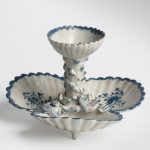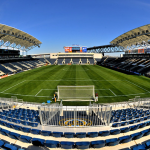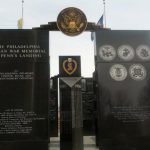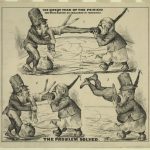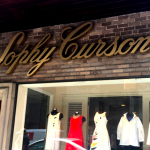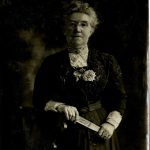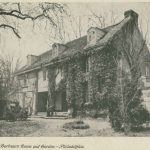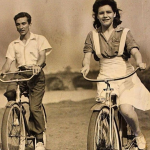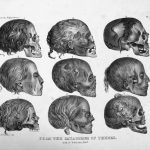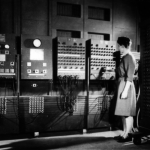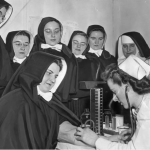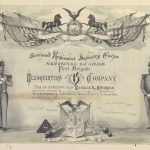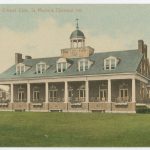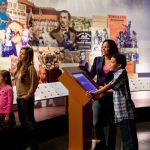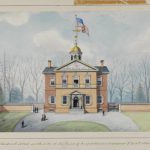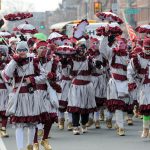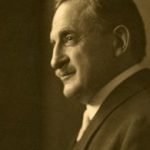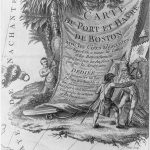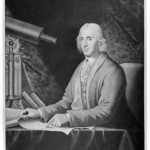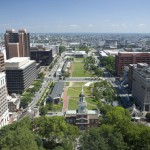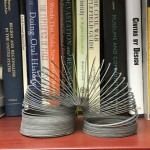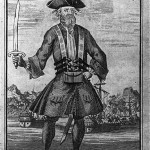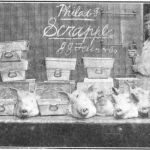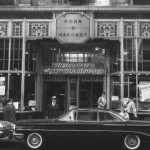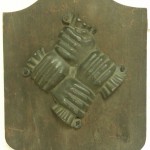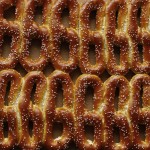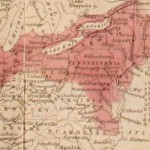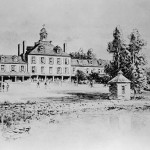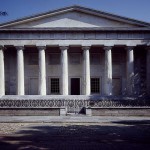Philadelphia and the World
Essay
From its origins as a series of settlements at the edge of the Atlantic World to the age of international air travel, Greater Philadelphia has been a crossroads of global interaction and exchange. With a diverse population from the start, inhabited by Native Americans and then colonized by Dutch, Swedes, Englishmen, Germans, and Africans, the region has been reshaped and reinvigorated by more than three centuries of new waves of immigration. Networks of transportation, communication, travel, trade, and culture link the region to the world.
Related Topics: Global Connections and Impact
Themes
Locations
Essays
- Sugar and Sugar Refining
- France and the French
- Polish Settlement and Poland
- Philadelphia Pepper Pot
- Pietism
- Musical Instrument Making
- German Reformed Church
- Moravians
- Dinosaurs and Paleontology (Study of Fossils and Prehistoric Life)
- Occupy Philadelphia
- Ceramics
- Seventh-day Adventists
- Jawn
- Nationalities Service Center
- Philadelphia Museum of Art
- University of Pennsylvania Museum of Archaeology and Anthropology (Penn Museum)
- Philadelphia Cream Cheese
- Islam
- It’s Always Sunny in Philadelphia
- Wieland; or, the Transformation: An American Tale
- Horticulture
- LOVE (Sculpture)
- Garment Work and Workers
- O Little Town of Bethlehem
- Shrines
- Fabric Row
- Saws and Saw Making
- Silver Linings Playbook
- Paper and Papermaking
- Silk and Silk Makers
- Autobiography of Benjamin Franklin (The)
- Pharmaceutical Industry
- Soccer
- American Friends Service Committee
- Slovaks and Slovakia
- Mennonites
- International Peace Mission Movement and Father Divine
- Environmental Movement
- Irish (The) and Ireland
- Mexican-American War
- Independence Seaport Museum
- Hurricanes and Tropical Storms
- Black Power
- South Asians
- Rock Music and Culture (Late 1960s to Present)
- Gas Stations
- Cold War
- Philadelphia Navy Yard
- Nativism
- Nuclear Power
- Pacific World (Connections and Impact)
- Fashion
- Anglican Church (Church of England)
- Scots Irish (Scotch Irish)
- Toy Manufacturing
- Dutch (The) and The Netherlands
- Musical Fund Society
- Opera and Opera Houses
- Thrift
- Botany
- Koreans and Korea
- Bicycles
- Bartram’s Garden
- Clocks and Clockmakers
- Classical Music
- Italians and Italy
- Art of Cecilia Beaux
- Mummies
- Literary Societies
- Philadelphia Maritime Exchange
- Genealogy
- Mexicans and Mexico
- ENIAC
- Freemasonry
- Hotels and Motels
- Smoking and Smoking Regulations
- Furnituremaking
- Convents
- Crowds (Colonial and Revolution Eras)
- Militia
- Philadelphia Ten
- Greek War for Independence
- Puerto Rico and Puerto Ricans
- Listen to the Mocking Bird
- Spanish-American War
- Automobile Racing
- Cycling (Sport)
- Pennsylvania Prison Society
- Cricket
- New Year’s Traditions
- Tomato Pie
- Locomotive Manufacturing
- Deindustrialization
- Helicopters
- Hinterlands
- British Occupation of Philadelphia
- Nigerians and Nigeria
- Benjamin Franklin Parkway
- City Beautiful Movement
- China Trade
- Kwanzaa
- Liberians and Liberia
- Vietnam War
- Artisans
- Infectious Diseases and Epidemics
- Boxing and Boxers
- Mummers
- Korean War
- Chemical Industry
- Root Beer
- Public Health
- Privateering
- Ornithology (Study of Birds)
- Academy of Natural Sciences of Drexel University
- Refineries (Oil)
- Funerals and Burial Practices
- Woman’s Medical College of Pennsylvania
- Military Bases
- Coffeehouses
- Loyalists
- Public Markets
- Scientific Societies
- American Philosophical Society
- Religious Society of Friends (Quakers)
- Philadelphia Story (The)
- New Sweden
- Log Cabins
- Surveying (Colonial)
- Down There
- Astronomy
- Pennsylvania (Founding)
- Country Clubs
- Red City (The)
- Philadelphia Orchestra
- Garbage Barge (Khian Sea)
- Lafayette’s Tour
- Tourism
- Legionnaires’ Disease
- Slinky
- Medicine (Colonial Era)
- Herpetology (Study of Amphibians and Reptiles)
- Dentistry and Dentists
- ODUNDE Festival
- Saint Patrick’s Day
- Rock and Roll (Early Years)
- First Purchasers of Pennsylvania
- Commercial Museum
- Philadelphia Board of Trade
- Anatomy and Anatomy Education
- Gunpowder Industry
- Garies (The) and Their Friends
- Revolutionary Crisis (American Revolution)
- Philadelphia (Warship)
- Films (Feature)
- U.S. Presidency (1790-1800)
- Point Breeze (Bonaparte Estate)
- Pipelines
- Sheppard Lee
- Gothic Literature
- Meschianza
- Chinatown
- Pirates
- Billiards (Pool)
- Papal Visits
- Quasi-War
- Tun Tavern
- Plantations
- Maps and Mapmaking
- Lewis and Clark Expedition
- Pennsylvania Impressionism
- Common Sense
- Arts and Crafts Movement
- West New Jersey
- Philadelphia Campaign
- Native American-Pennsylvania Relations, 1754-89
- Constitutional Convention of 1787
- Airports
- Duffy’s Cut
- Capital of the United States (Selection of Philadelphia)
- Forts and Fortifications
- Tastykake
- Seven Years’ War
- Colonization Movement (Africa)
- Scrapple
- War of 1812
- Hog Island
- U.S. Congress (1790-1800)
- Native Peoples to 1680
- Columbus Day
- Immigration and Migration (Colonial Era)
- Fort Wilson
- World War I
- Medical Publishing
- Southwest Philadelphia
- Immigration (1870-1930)
- Automats
- African American Migration
- Sullivan Principles
- Insurance
- Recording Industry
- Settlement Houses
- Knights of Labor
- Haitian Revolution
- Immigration (1790-1860)
- Great Depression
- Immigration (1930-Present)
- Paints and Varnishes
-
Roman Catholic Education
(Elementary and Secondary) - Nativist Riots of 1844
- Centennial Exhibition (1876)
- Shipbuilding and Shipyards
- Slavery and the Slave Trade
- Spanish-American Revolutions
- French Revolution
- Flaxseed and Linen
- Industrial Workers of the World
- Sesquicentennial International Exposition (1926)
- Pretzels
- Independence National Historical Park
- Independence Hall
- World War II
- Yellow Fever
- Influenza (“Spanish Flu” Pandemic, 1918-19)
- Italian Market
- Cholera
- Lazaretto
- Bank War
- Higher Education: Private (Religious)
- Philadelphia Plan
- Flour Milling
- Barnes Foundation
- Free Society of Traders
- Greeks and Greece (Modern)
- Earthquakes
- Liberty Bell Classic
- War in Afghanistan
- Lutherans and the Lutheran Church
- Philadelphia Regional Port Authority
- Monument to Six Million Jewish Martyrs
- Women’s International League for Peace and Freedom
- Missionaries
- Socialist Party
- Popular Music
- Candy and Candymakers
- Episcopal Church
- United Nations World Capital
- Jews and Judaism
- Coronaviruses
- Indentured Servitude
- Atlantic World
- Delaware River Ports
- Buddhism
Artifacts
Map
Philadelphia’s long connection with France and the Francophone world took shape over several centuries. In 1889, French Philadelphians commissioned the Saint Joan of Arc statue on Kelly Drive.
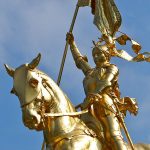
The German Reformed Church played a role in developing the religious landscape of southeastern Pennsylvania.
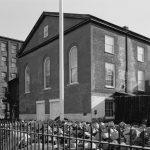
The Philadelphia area has played a major part in paleontology, yielding discoveries that have helped to illuminate millions of years of existence. Fossils found at the former Inversand Quarry in Sewell, N.J., date to the Cretaceous Period.
A textile and garment district emerged on South Fourth Street during the late nineteenth and early twentieth centuries as immigrants transformed the neighborhood into a Jewish Quarter.
Philadelphia ranked as one of the nation’s foremost saw manufacturing centers for much of the nineteenth and twentieth centuries. By the mid-nineteenth century a number of major saw manufacturers operated in the city, including the world’s largest, Henry Disston’s Keystone Saw Works.
The Oscar-winning 2012 movie 'Silver Linings Playbook' was filmed in and around Philadelphia, including the Llanerch Diner in Upper Darby, Delaware County.

Philadelphia became one of the nation's major manufacturers of silk in the early nineteenth century. The city's most well-known silk goods maker, Horstmann & Sons, was located at Fifth and Cherry Streets.

Autobiography of Benjamin Franklin
Over eighteen years, from 1771 until his death, Benjamin Franklin composed his autobiography. His legacy is immortalized at the Benjamin Franklin Museum in Center City.
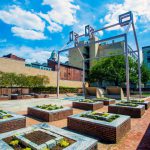
Philadelphia played a key role in the birth of the American pharmaceutical industry during the early nineteenth century. The Philadelphia College of Pharmacy (now USciences) was the nation's first pharmacy college.
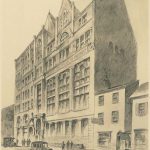
American Friends Service Committee
The AFSC, founded by Philadelphia Quakers in 1917, coordinated pre- and postwar relief projects across the world starting in the twentieth century. Many members attended the Germantown Friends Meeting House.
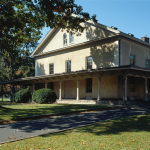
Slovak immigrants made important contributions to Philadelphia industries from iron and steel to leather and textiles. Many Slovak artisans did wirework for the city at factories such as this now-converted location on Race Street.
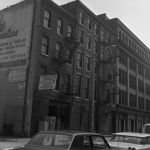
German Mennonites were among the first settlers in Philadelphia in the early 1680s. The 1770 Germantown Meetinghouse remains open as a museum and historic site.
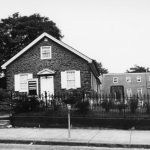
International Peace Mission Movement and Father Divine
The religious Peace Mission Movement was known for its civil rights activism as well as its 'cultic' qualities. The Divine Lorraine Hotel in North Philadelphia hosted many of the Mission's social welfare activities.
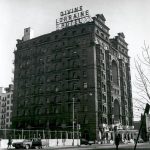
Industrial sites like the Philadelphia Coke Co. plant in Bridesburg brought Philadelphians to the forefront of the environmental movement after World War II. Local residents continue to be active in environmental justice concerns.
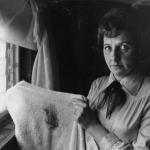
Located here is a memorial to the Irish people and their suffering during the Great Famine between 1845-1850, the famine was one of many motivating factors for the Irish to immigrate to the United States.
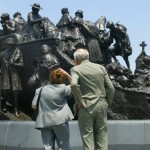
Despite taking place in the American Southwest and Central America, the Mexican-American War (1845-48) had significant ties to the Philadelphia area. A monument to soldiers killed in the war stands in Philadelphia National Cemetery.
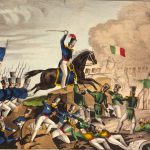
The Independence Seaport Museum is home to an extensive collection of the Greater Delaware Valley's maritime history and two iconic vessels, the Becuna submarine and the USS Olympia.

Hurricanes and Tropical Storms
The Greater Philadelphia area's position near the Atlantic Ocean has always made it vulnerable to hurricanes and tropical storms. When storms make landfall, the coast is particularly vulnerable due to seawalls and storm surge.
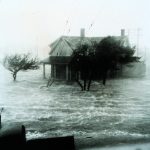
The Black Power movement came to prominence in the 1960s and 1970s. From a storefront headquarters, the Philadelphia Black Panther Party distributed free lunches and information about the organization.

South Asians arrived in Philadelphia after changes in immigration policy, lured by university and skilled employment. Here they established businesses, cultural organizations, and religious centers, including several suburban Hindu Temples.

Rock Music and Culture (Late 1960s to Present)
The Electric Factory was opened in 1968 by club promoters, the Spivack brothers. The rock club featured artists such as Janis Joplin, Pink Floyd, and Jimi Hendrix. After the closing of the original club, a second Electric Factory was opened in 1995. The concert venue eventually joined forces with a concert promotion company to form Live Nation Entertainment.
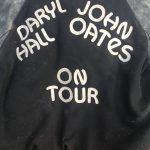
From designs evoking Greek temples built at the dawn of the automobile age to the ubiquitous utilitarian structures of the twenty-first century, gas stations have become a fixture of the Philadelphia area's landscape.
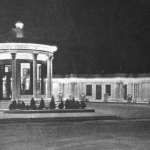
The history of the Philadelphia Navy Yard has been one of constant struggle, repeatedly staring down imminent closure only to be saved at the last second by stalwart local politicians or a timely military conflict. The Navy Yard, located on League Island, operated for 120 years.
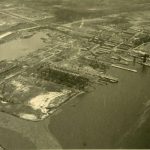
The late twentieth century proliferation of nuclear power plants and a partial meltdown at the Three Mile Island Nuclear Generating station led to widespread protests. The PECO building in Philadelphia was a frequent target.
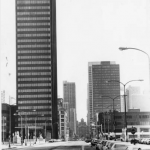
Pacific World (Connections and Impact)
Philadelphia's connections to the Pacific World are as old as the city itself, including early participation in the China Trade and the first Japanese gardens in the United States at the Centennial Exhibition.
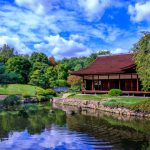
Anglican Church (Church of England)
Completed in 1753, Christ Church was a meeting place for Anglicans before the American War for Independence.
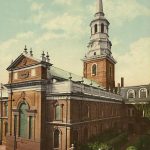
Presbyterian minister William Tennent founded this school in 1726 to train evangelically minded clergy. Critics mocked Tennent for attempting to educate poor country boys, derisively referring to his academy as the “Log College.”
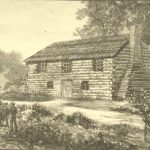
Philadelphia helped define the toy industry in the United States with simple yet engaging toys that became beloved by generations. Schoenhut's Humpty Dumpty Circus featured a camel, which is now housed at the Philadelphia History Museum at Atwater Kent.
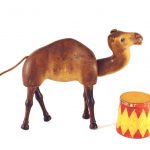
Dutch (The) and The Netherlands
The Old Dutch House in New Castle, Delaware, dates to the seventeenth century and is believed to be one of the oldest houses in Delaware. Henry Hudson, who was employed by the Dutch East India Company, anchored in Delaware Bay in 1609, and claimed the country for the Dutch.

A predecessor for the Philadelphia Orchestra, the Musical Fund Society formed in 1820 to promote professional and amateur musical talent in Philadelphia. For many years, the society operated Musical Fund Hall, the center of Philadelphia's music scene.

Philadelphia was once home to a number of opera houses that served as venues for its many opera companies. Three of these venues remain standing, including North Broad Street's Metropolitan Opera House.
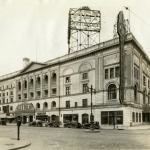
Koreans became one of the top ten new immigrant groups in the Philadelphia region by 1970. Korean businesses grew in Montgomery County communities such as Elkins Park and Cheltenham.
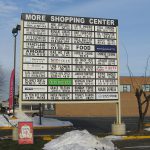
Established in 1729 by John Bartram, Bartram's Garden is the oldest botanical garden in the United States.
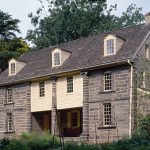
Clockmakers beginning in the colonial era have made clocks that have become Philadelphia landmarks, including the Thomas Stretch clock at Independence Hall.

Philadelphia has been home to prestigious classical music groups, venues, and schools like the Settlement Music School. Composers in Philadelphia also wrote the first classical pieces penned in the American colonies.
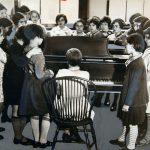
Italian immigration of the late nineteenth century set the stage for a large Italian influence on Greater Philadelphia, most obviously in the Italian Market of South Philadelphia.
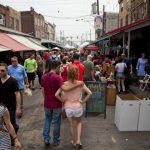
Known for portraiture, Cecilia Beaux studied and taught at the Pennsylvania Academy of the Fine Arts, located at Broad and Cherry Streets.
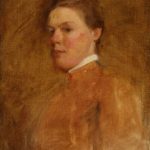
Literary Societies provided Philadelphia's elite with a place for intellectual and artistic discourse. Some, like the Acorn and Rittenhouse Clubs, remained active in the twenty-first century.
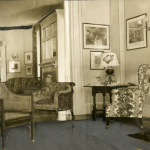
Philadelphia Maritime Exchange
The Philadelphia Maritime Exchange helped turn Philadelphia into a premier port in the U.S. Its legacy is preserved in the collections of the Independence Seaport Museum on Columbus Boulevard along the Delaware River.
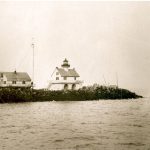
Mexicans became the region’s second-largest immigrant group in the early twenty-first century, impacting the region's culture and economy. The Mexican Cultural Center of Philadelphia is in the Bourse Building, near Independence Hall.
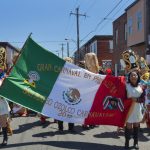
Philadelphia was one of the first American cities with a branch of the fraternal society known as the Freemasons, whose ornate temple in Philadelphia is one of the most prominent in all of Freemasonry.
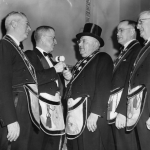
Philadelphia became an early leader in hotel development, introducing innovations in the nineteenth and twentieth centuries. The Bellevue-Stratford Hotel was widely considered to be the most extravagant hotel in the country.
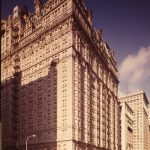
Smoking and Smoking Regulations
Tobacco has been smoked in the Philadelphia area for social, medicinal, and religious uses since the precolonial era. N.W. Ayer & Son on Washington Square created ads for both R.J. Reynolds’ and Phillip Morris Companies.
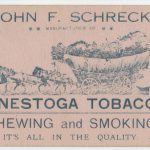
An abundance of local and imported woods, a large immigrant population, and a bustling port combined to make Philadelphia one of the centers of American furniture making in the Colonial and Early Republic eras. Many examples are in the Philadelphia Museum of Art.
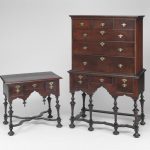
Crowds (Colonial and Revolution Eras)
Ordinary people helped shape the political culture by engaging in public celebrations, civil disorder, and, occasionally, collective violence. Crowds in the State House yard, for instance, heard and cheered the Declaration of Independence.

The Philadelphia Ten was all-women’s group of painters and sculptors that exhibited together for nearly thirty years starting in 1917. Works of the Ten can be found at Woodmere Museum of Art on Germantown Avenue.
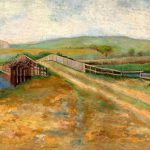
During the Greek War for Independence (1821-28), Philadelphians helped arouse public sentiment in favor of the Greeks and raised money and provisions to aid the cause. The Second Bank was modeled on the Parthenon of Athens.
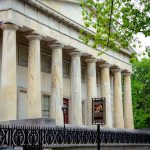
Relations between Philadelphia and Puerto Rico reach back to colonial times. Today, North Fifth Street's “El Bloque de Oro,” or “Golden Block,” remains a vibrant neighborhood of Latino culture and commerce.
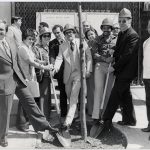
'Listen to the Mockingbird' was written in 1855 by Septimus Winner, who lived and worked at a studio at 1706 N. Sixteenth Street in his later life.
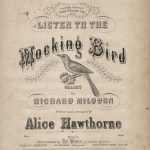
The Spanish-American War had a significant influence on Philadelphia, and the USS Olympia, the flagship of the U.S. Asiatic Squadron, is permanently moored as Penn's Landing.
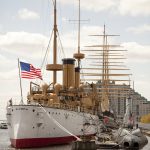
In 1926, the National Motor Racing Association constructed one of the nation’s first purpose-built dirt speedways in Langhorne.
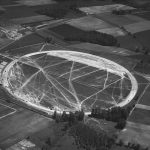
The Philadelphia International Cycling Classic made famous the “Manayunk wall,” where thousands of spectators lined Lyceum Avenue to watch cyclists ascend the 285-foot climb with a 17 percent grade at its steepest segment.
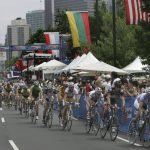
Spurred by reports of deplorable conditions at the Walnut Street Jail, a nondenominational group of religiously motivated activists set out to reform Philadelphia's prisons. Their reforms soon spread to prisons around the world.
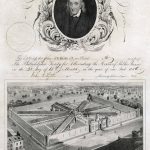
From a quiet holiday for visiting friends, to Mummers and fireworks, Philadelphians have always loved to celebrate New Year's. With new immigrants came new holiday traditions. The Mummers Museum is on 'Two Street.'

Southern Italian immigrants brought recipes from their homeland to Philadelphia including tomato pie, a pizza-like creation with a thick crust, tomato gravy, and a dusting of cheese. Sarcone's on Ninth Street is one of the purveyors.
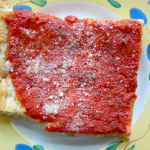
Baldwin Locomotive dominated the steam-locomotive business. In 1906 alone, the Baldwin Locomotive Works produced 2,666 steam locomotives and employed more than eighteen thousand workers at its facilities on North Broad Street.
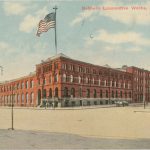
High labor costs, evolving technology, and changing tastes led industry to flee Philadelphia, leaving in its wake unemployment and scarred neighborhoods. At Broad and Lehigh, the Botany 500 building once was a Ford plant where soldiers' helmets were produced for WWI.
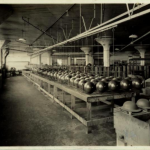
Philadelphia was the cradle of the nation's rotary-wing aviation in the twentieth century. The Piasecki Aircraft Corporation, formed in 1955 and located in Essington, produced the world’s first shaft-driven compound helicopter in 1962.
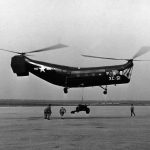
Hinterlands (Seventeenth and Eighteenth Centuries)
The bounty of the hinterlands helped fuel Philadelphia's progress. Hopewell Furnace, like other iron forges in the region during the colonial and early republic periods, supplied iron necessary for industry.
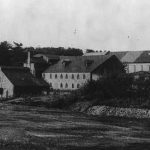
British Occupation of Philadelphia
On September 26, 1777, the British army marched into Philadelphia, beginning an occupation that lasted until the following spring. For nearly seven weeks, British resupply was impeded by Fort Mifflin on the Delaware.
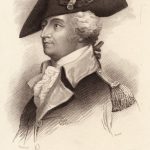
Nigerians became the second-largest African population in the Delaware Valley early in the twenty-first century, leading development of the new Pan-Africanism. The African Cultural Center is on Springfield Avenue.
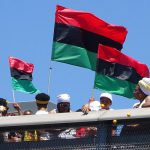
Based on plans by Paul Cret and Jacques Gréber, much of the Fairmount Parkway (renamed Benjamin Franklin Parkway) including the Philadelphia Museum of Art, the Free Library, and Logan Circle, was completed or under construction by 1930.
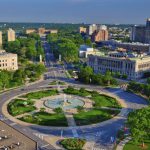
The City Beautiful Movement had significant influence on Philadelphia, including Rittenhouse Square, redesigned in 1913 with diagonal walkways, fountains, tree plantings, and sculptures. 'Billy' is a public favorite at the southwest corner.
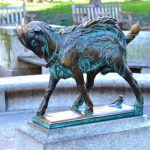
Philadelphians participated enthusiastically in trade with China after the Revolution, importing silks, tea, and porcelain into the city—often by illegally smuggling opium into China. The Philadelphia Seaport Museum is on Columbus Boulevard at Penn's Landing.
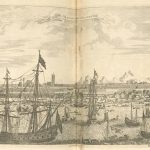
Greater Philadelphia has had close links to Liberia since free blacks and abolitionists helped colonize Liberia’s founding in the early nineteenth century. In recent times, many Liberians fled violence at home, and for some the escape route led to 'Little Monrovia” along Woodland Avenue near Sixty-Sixth Street.
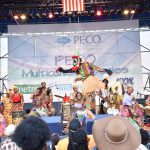
During the Vietnam War era, demonstrations were common at JFK Plaza near City Hall as well as symbolic sites such as the Liberty Bell and Independence Hall.
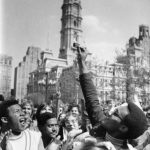
Philadelphia suffered many epidemics in its early years, and Pennsylvania Hospital on Spruce Street was in the forefront of battling them. Most were overcome by the early twentieth century, but some, like polio and HIV, posed new challenges.

In 1961, the legendary Blue Horizon opened its doors to professional boxing shows on North Broad Street in North Philadelphia. For most Philadelphia boxing fans who packed the hall, the former Moose Hall was Mecca.
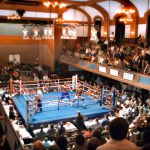
The early 1950s conflict between North Korea and South Korea had a big impact on Greater Philadelphia, leading to a surge in shipbuilding employment and the deaths of hundreds of local servicemen.

Greater Philadelphia was a chemical center from the eighteenth century. In 1864, Harrison Brothers opened a massive facility on Gray's Ferry Avenue. In 1917, DuPont purchased the entire Harrison Brothers enterprise.
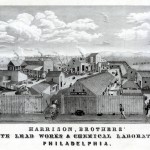
Philadelphia has waged public health campaigns across its history, including America's first almshouse and walk-in public health clinic and the Lazaretto Quarantine Station.
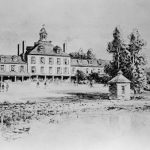
Philadelphia's large port made it a hotbed for privateering, the legal capture of enemy ships by private citizens. This career could be lucrative and some privateers built large estates with their earnings.
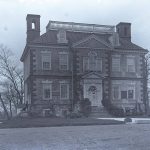
Many pioneers in the field of ornithology called Philadelphia home, including Alexander Wilson and John James Audubon, who was based near a town that changed its name to Audubon.
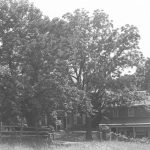
Since the early nineteenth century, the Academy of Natural Sciences has sought to fulfill a dual mission of scientific discovery and the diffusion of knowledge.
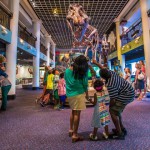
Philadelphia emerged as a petroleum hub in the second half of the nineteenth century. In 1926, Aero Service Corporation captured aerial views of the Atlantic Refining Company in South Philadelphia.

Burial and funeral rituals have served to honor the dead and comfort the living. The Museum of Mourning Art in Drexel Hill tells the story of funerals through the ages.
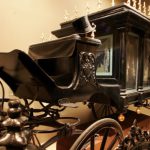
Woman’s Medical College of Pennsylvania
The first medical school in the world for women authorized to award them the M.D., Woman's Medical College moved to this location In 1862.
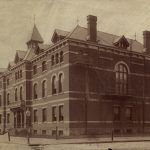
Since the American Revolution era, military bases have shifted in size and economic impact during times of war and peace. The Naval Shipyard in South Philadelphia, where 22,000 workers once built ships, became The Navy Yard office park.
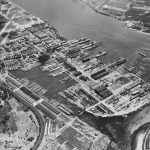
Coffeehouses have been an integral part of the region's social fabric since the eighteenth century. The Old London near the Delaware River waterfront was Philadelphia’s leading coffeehouse in the 1760s, owned by printer William Bradford.
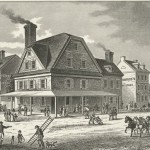
Public markets in Philadelphia belong to an ancient tradition of urban food provisioning. The Reading Terminal, which opened in 1892, opened a new era for urban food marketing and distribution.
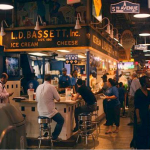
Since the colonial era, Philadelphia scientists have formed scientific societies. Many, including the Wagner Free Institute of Science in North Philadelphia, still exist and operate museums.
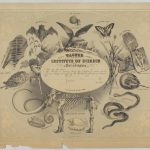
American Philosophical Society
Established in 1743 by Benjamin Franklin and John Bartram to 'promote useful knowledge,' the American Philosophical Society brought renown to colonial scientists. It continues its intellectual pursuits on Fifth Street near Walnut.
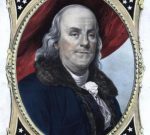
Philadelphia was Quaker William Penn's 'holy experiment' in founding a colony of virtuous Quakers. The influence of the church can still be felt today, and the Arch Street Meeting House still stands.
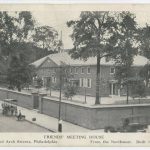
Philip Barry's play about Philadelphia's Main Line society spawned an Academy Award winning film and a musical and was credited with reviving Katharine Hepburn's flagging career. Ardrossan in Villanova was Helen Hope Montgomery Scott's family estate.
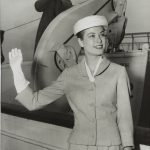
Though it existed for less than twenty years, the colony of New Sweden had lasting effects on the Greater Philadelphia area. Historical sites from the colony remain standing to this day.
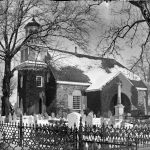
Scandinavians introduced the log cabin to America when they settled New Sweden in 1638. The Lower Swedish Log Cabin in Upper Darby, Pennsylvania, exemplified the typical seventeenth-century Swedish design.

Land, the most valuable commodity during the colonial era, had to be surveyed before it could be granted or transferred. Pennsylvania's first surveyor-general, Thomas Holme, is commemorated with a marker on Holme Avenue in Northeast Philadelphia.
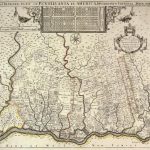
This intersection is considered the beginning of the Port Richmond neighborhood, which was the setting of the novel Down There and home of author David Goodis.

In 1681 the king of England granted William Penn a charter to found Pennsylvania, but the colony did not evolve exactly as Penn had foreseen it. Among the First Purchasers were Germans who called their section Germantown.
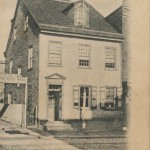
Country clubs originated in the 1890s as elite, family-oriented havens usually emphasizing golf. Among the earliest clubs was the Philadelphia Country Club, now located in Gladwyne.
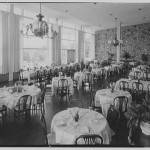
Written by S. Weir Mitchell, <i>The Red City</i> was set in 1790s Philadelphia, a place divided by the Federalists and Republicans and a place that served as a refuge for French emigres. The President's House served as the office and residence for President George Washington.
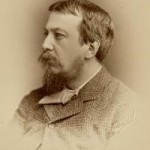
Founded in 1900, the Philadelphia Orchestra developed into an iconic organization for Philadelphia and cultural ambassador to the world. The orchestra's home is the Kimmel Center for the Performing Arts.
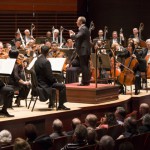
The waste ash that was loaded onto the Khian Sea and spent years being moved around the world originated in Roxborough at the Northwest Incinerator, which is no longer in use.

The 1976 Legionnaire's disease outbreak centered on the Bellevue-Stratford Hotel, where the disease's victims had gathered for an annual American Legion convention.
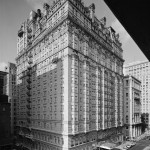
Philadelphia was a center of disease and medical exploration during the colonial period, and Pennsylvania Hospital at Eighth and Pine Streets was one of the first hospitals in the colonies.
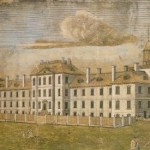
Herpetology (Study of Amphibians and Reptiles)
Amphibians and reptiles fostered rich scientific discussions among early Philadelphia naturalists, including William Bartram and Charles Willson Peale, and the Academy of Natural Sciences published research on the subject.
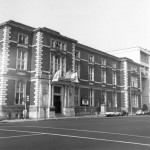
Innovative dentists in Philadelphia helped to shape dental care, procedures, and tools. The S.S. White firm, with a factory located here in the 1880s, became a premier manufacturer of dental tools.
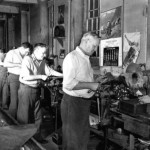
Drawing inspiration from African cultural heritage, specifically the Oshun Festival of the Yoruba people in Nigeria, the annual ODUNDE Festival draws thousands to South Philadelphia.
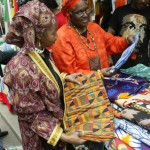
Once a religious holiday and a political parade, Saint Patrick’s Day transformed over two centuries into a largely secular celebration reflecting the changing culture of Philadelphia’s Irish population and of the city at large.

First Purchasers of Pennsylvania
The First Purchasers were several hundred people and groups who initially bought land from William Penn's, including a group of German investors, led by Daniel Pastorius, who received 15,000 acres that became Germantown.
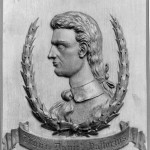
Founded in 1897, the Commercial Museum promoted the merits of international trade. Later renamed the Civic Center Museum, it closed in 1994.
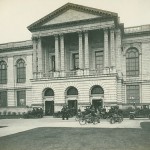
The Merchants' Exchange was an early home of the Philadelphia Board of Trade, which promoted economic development.
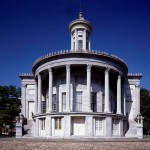
As the chief medical city in the United States during the eighteenth and nineteenth centuries, Philadelphia also became the leading center of anatomical education. The Mütter Museum offers evidence of that, including an vast collection of skeletons.
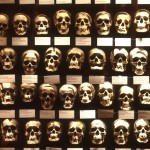
The central event in the novel, 'The Garies and Their Friends,' is a graphically-rendered race riot, evoking the historical riots of 1834, 1838, 1842, and 1849. One of these riots, the Lombard Street Riot, has a historical marker located at Sixth and Lombard Streets.
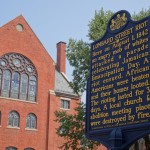
Revolutionary Crisis (American Revolution)
On the night of September 16, 1765, a large mob gathered at the State House to target individuals associated with the Stamp Act, including Ben Franklin.
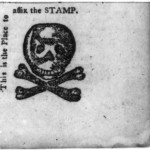
Philadelphians raised money in one week during June 1798 to build the USS Philadelphia to help increase American naval power to protect commerce. The frigate was built at Humphrey’s & Wharton Shipyard on the Delaware River.
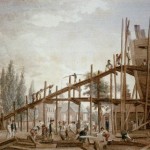
Philadelphia has been used as the setting of many recent films, but the industry's history in the city dates back to its very birth in the 1890s. In the early 1900s, Lubin Studios in North Philadelphia was a pioneer in silent film production.

Although the federal government under the U.S. Constitution went into operation in New York, the capital moved to Philadelphia in 1790. George Washington lived in the President's House, as did John Adams when he succeeded Washington.
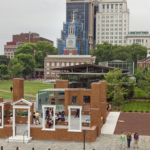
Point Breeze, Joseph Bonaparte’s Country Estate
Joseph Bonaparte, older brother to Napoleon and former king of Spain, lived in an opulent New Jersey estate in the years after his brother's fall from power.
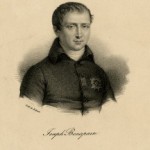
The discovery of oil in Titusville, Pennsylvania, and the drilling of the first successful well in 1859 led to an oil revolution. Soon pipelines emerged as a key to oil transport, and pipeline growth continues today. Some lines reach refineries at Marcus Hook, near the state line between Pennsylvania and Delaware.
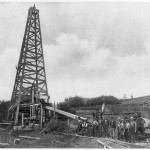
The novel 'Sheppard Lee' became famous in its day for its literary style and social commentary as its namesake character's soul migrated into the bodies of recently deceased acquaintances. Author Robert Montgomery Bird lived at 247 S. Tenth Street.
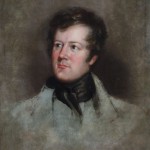
Philadelphia is the birthplace of gothic literature in America. One of its early purveyors was Edgar Allan Poe, who lived in Philadelphia for six years. His home at 530 N. Seventh Street is a national historical site.
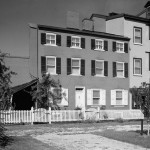
The Meschianza, an elaborate send-off for Gen. William Howe, was held on a plain between the Delaware River and the Walnut Grove estate at what is now Washington Avenue and South Fifth Street.
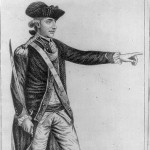
Settled by Chinese migrants in the 1870s, Philadelphia’s Chinatown grew over the course of the twentieth century from a small ethnic enclave on the outskirts of Skid Row to a vibrant family community in the heart of Center City. Threatened by urban renewal in the 1960s and 1970s, Chinatown residents marshaled the redevelopment process to rebuild and expand their community over the course of the late twentieth century. This legacy of activism continued to inform struggles against gentrification and for affordable housing, education, and community self-determination. While Chinese and other Asian immigrants dispersed throughout the greater Philadelphia area, Chinatown remained as a central touchstone for Asian life in the region.
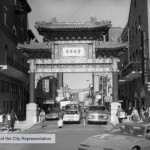
The first men's club in Philadelphia to offer billiards to its members appears to have been the Philadelphia Club, which added a billiards room to its new facility at Thirteenth and Walnut Streets in 1849.

The public Mass held by Pope John Paul II on Logan Circle on October 3, 1979, drew more than a million people, by police estimates, stretching on the Benjamin Franklin Parkway from City Hall to the Art Museum and beyond.

For nearly a hundred years from 1693 to 1781, Tun Tavern served residents and visitors of Philadelphia near the Delaware River waterfront with food, spirits, and sociability.
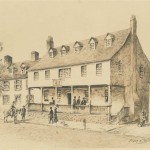
Small farms and larger properties called plantations drove the Mid-Atlantic's colonial economy. The Colonial Pennsylvania Plantation is a living history site focusing on 1760-90 farm life in southeast Pennsylvania.
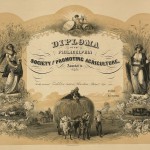
In the nineteenth century, Philadelphia became the center of the American map publishing industry. Franklin Maps in King of Prussia carries on that tradition today.
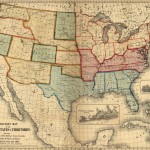
The American Philosophical Society, located here in Philosophical Hall, received specimens from Lewis and Clark's expedition to the West.
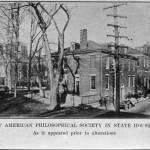
Pennsylvania Impressionist painting flourished in eastern Pennsylvania in the first half of the twentieth century. Often referred to as the “New Hope School” because artists in Bucks County produced the best-known works, the style was also practiced vigorously in Montgomery, Chester, Delaware, and Lehigh Counties, and key artists of the movement taught at the Pennsylvania […]

Written by Thomas Paine and published by Robert Bell's print shop at this location on January 10, 1776, the pamphlet Common Sense helped rally support for independence.
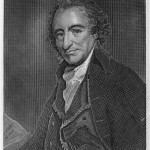
The Arts and Crafts movement evolved against the backdrop of increasing industrialization. The movement's art-focused communities included Rose Valley, established near Moylan, Pennsylvania, in 1901.
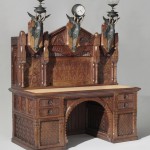
Between 1674 and 1702, New Jersey was divided in half, with the West New Jersey colony facing the Delaware River. Settlements like Burlington retained a distinct political and social identity, even after falling into Philadelphia's economic orbit.
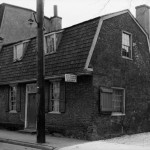
Having already captured New York in 1776, British General Sir William Howe devised a campaign to capture Philadelphia in 1777. Howe was able to occupy the city on September 26 of that year. Fort Mifflin, located on Mud Island, was bombarded to open a supply line to the occupied city.
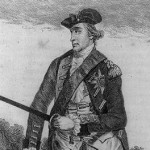
Native American-Pennsylvania Relations, 1754-89
From 1754-89, relations between Pennsylvania and native tribes eroded badly. By 1789, only one enclave remained, as others were pushed westward or killed in fights with settlers. Near Conestoga, Pa., was the site of a massacre by the Paxton Boys.
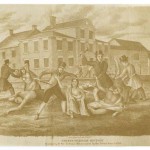
Constitutional Convention of 1787
The Constitutional Convention met in Philadelphia from May 25 to September 17, 1787, at Independence Hall (then known as the Pennsylvania State House) to draft the United States Constitution.
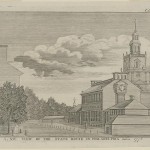
At Duffy’s Cut, a railroad construction site in Chester County, Pennsylvania, fifty-seven Irish immigrant railroad workers died amid a cholera epidemic in the summer of 1832 and were buried in a mass grave.
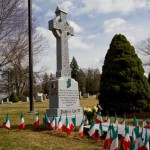
As the national capital from 1790 to 1800, Philadelphia was the seat of the federal government for a short but crucial time in the new nation’s history.
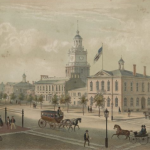
Forts and other defenses on the Delaware River and, later, along the Atlantic coast guarded Philadelphia and other commercial centers during times of military jeopardy. Fort Mifflin and other surviving forts serve as reminders of the key role forts played in the region's economic, political, and social history.
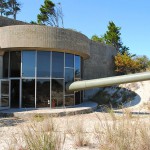
By supplying provisions to British military troops or providing safety in the form of row houses on Pine Street for 450 Acadians fleeing Nova Scotia, Philadelphia played a significant role in the Seven Years' War.
Colonization Movement (Africa)
The African colonization movement was a nineteenth century attempt to resettle free Black people from North America to countries like Liberia. The Pennsylvania Colonization Society had offices here, and raised funds for the costs of traveling to Liberia.
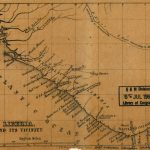
Hog Island was once an agricultural island in the Delaware River until the Twentieth Century, when sands and soils from river dredging connected it to the shore. The new, featureless, land was suitable for industry and development.
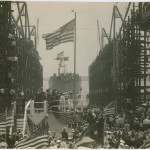
The U. S. Congress met in Philadelphia for ten years, testing the endurance of the Constitution and set the groundwork for future political practice.

Through shared economic goals and common values of peace, individual freedom, and cultural openness, the Lenapes and their European allies established the ideals of Delaware Valley society before William Penn received his land grant in 1681. A statue of Lenape leader Tamanend stands at Front and Market Streets.
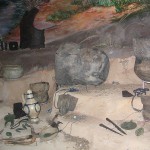
Although Christopher Columbus never sailed to Philadelphia, memorials and annual celebrations since the nineteenth century have reminded generations about his historic voyage.
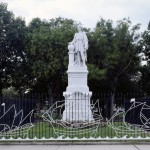
Immigration and Migration (Colonial Era)
Diverse peoples immigrating or migrating from Europe, Africa, and other American colonies before the Revolutionary War turned Philadelphia into colonial America's largest city.
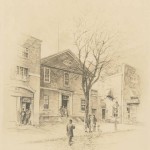
On October 4, 1779, the house of James Wilson went from being the residence of a wealthy Philadelphia merchant to becoming a stronghold against a rowdy group of militiamen taking action against war profiteers.

Although the United States’ involvement in World War I lasted just over a year, the conflict in Europe had a lasting impact on the Philadelphia region. The war created new opportunities for the region's industrial base, including the New York Shipbuilding Corporation of Camden.
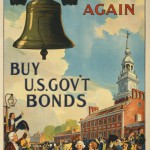
Washington Square in the early twentieth-century served as the nexus for three of Philadelphia's most prominent medical publishers. Medical students throughout the country read textbooks and manuals produced by these medical publishers.

During the national explosion of immigration that took place between 1870 and the 1920s, the Philadelphia region became more diverse as it was energized by German, Italian, Jewish, and Spanish immigrants who changed the character of the places they settled.
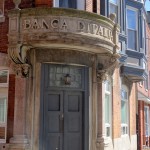
People of African descent have migrated to Philadelphia since the seventeenth century. Although African Americans faced discrimination, disfranchisement, and periodic race riots in the 1800s, the community attracted tens of thousands of people during World War I's Great Migration.
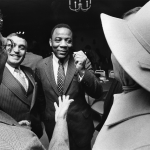
Philadelphia civil rights leader Leon H. Sullivan first came to Philadelphia to pastor Zion Baptist Church. The Global Sullivan Principles represent one of the twentieth century’s most powerful attempts to effect social justice through economic leverage.
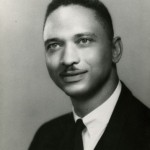
In Camden, New Jersey, the Victor Company in the early 1900s was nation’s largest manufacturer of musical recordings.
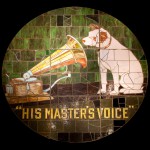
The settlement house movement spread to Philadelphia in the 1890s as a large influx of needy immigrants and unsanitary conditions in the city attracted the attention of middle-class, college-educated reformers.

The Knights of Labor, the first national industrial union in the United States, was founded in Philadelphia on December 9, 1869. By mid-1886 nearly one million laborers called themselves Knights.
During the decade the federal capital was in Philadelphia, United States policy toward St. Domingue changed substantially. Important policy decisions emanated from the presidential residence.
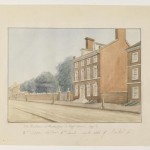
The revival of immigration to Philadelphia and its surrounding region in the early nineteenth century provided one of the most powerful elements in reshaping the city's society. The German Society of Pennsylvania assisted German newcomers in finding jobs and housing.

The region experienced severe economic hardship and fundamental change during the Great Depression. The Erie National Bank of Philadelphia, shown here, suffered a bank run in 1931.
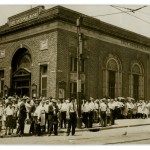
For most of the decades since the United States’ immigration restriction acts of the 1920s, Philadelphia was not a major destination for immigrants, but at the end of the twentieth century the region re-emerged as a significant gateway.
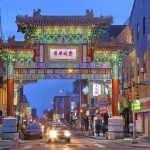
In the U.S., Philadelphians initiated the transition from imports and small-scale preparation to large-scale manufacturing of paint materials. Samuel Wetherill Jr. erected a factory in 1809 to produce lead pigments.
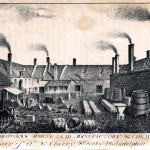
Roman Catholic Education (Elementary and Secondary)
For more than three centuries Parochial schools in the Philadelphia region have responded to the changing characteristics of the region’s Catholic population.
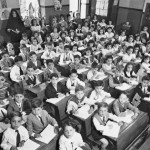
On May 8, anti-immigrant mobs torched several private dwellings, a Catholic seminary, and two Catholic churches: St. Michael’s and St. Augustine’s.
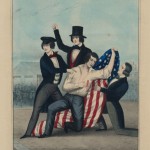
Modeled after the Crystal Palace Great Exhibition in London, the Centennial Exhibition in 1876 exhibited national pride and belief in the importance of education and progress through industrial innovation.
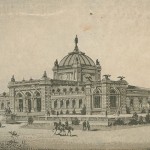
Philadelphia and surrounding southeastern Pennsylvania, Delaware, and New Jersey riverfront ports developed one of the greatest shipbuilding regions in the United States.

Early Philadelphia, an Atlantic trading hub, became both a focal point for the slave trade and a community of enslaved Africans. The London Coffee House was sometimes a location for slave trading.
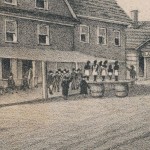
As a port with longstanding commercial, cultural, and political connections with Spanish America, Philadelphia played a significant role in the era of Spanish-American revolutions and became a center for Hispanic studies.
The French Revolution of 1789 prompted many citizens to flee to the U.S. Most settled along the Delaware River in the Mulberry district of Philadelphia (an area between modern day Market Street, Arch Street, Second Street, and Columbus Boulevard).
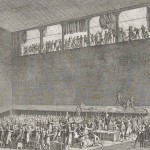
In the colonial era linen and flaxseed were fundamental to the mercantile life of Philadelphia and the Delaware Valley. Philadelphia's linen and flaxseed market extended from the farthest point of settlement, Fort Pitt, to the fields of England and Ireland.
Industrial Workers of the World
In the early 1900s thousands in greater Philadelphia belonged to the IWW. Local 8, which organized the city’s longshoremen, was the most powerful and racially inclusive branch in the Mid-Atlantic.
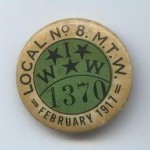
Sesquicentennial International Exposition (1926)
In 1926, Philadelphia hosted the Sesquicentennial International Exposition opened to great fanfare but failed to attract enough visitors to cover its costs.
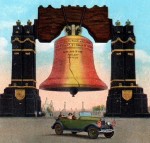
Independence National Historical Park
Independence National Historical Park preserves and provides access to Independence Hall, the Liberty Bell, and other American Revolution and early American history sites.
Originally the Pennsylvania State House, this landmark is associated with the Declaration of Independence, the U.S. Constitution, and is now a treasured shrine, tourist attraction, and World Heritage Site.
World War II, which created change for industries, populations, and politics in many urban areas in the United States, had a transforming effect on the Philadelphia region.
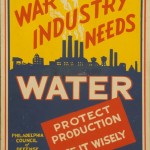
Yellow Fever hit Philadelphia with a vengeance in 1793. Beginning from a cluster of infections near the Delaware waterfront, the fever spread rapidly through the summer and autumn, fueling panic throughout the city.
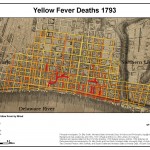
Influenza (“Spanish Flu” Pandemic, 1918-19)
The influenza virus that killed millions of people worldwide began its deadly ascent in Philadelphia after sailors, carrying the virus from Boston, arrived at the Philadelphia Navy Yard in early September 1918.
The Italian Market evolved as the principal food shopping hub for the Italian immigrants who began to settle South Philadelphia in large numbers at the end of the nineteenth century.
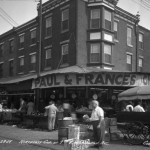
Higher Education: Private (Religious)
The religious diversity of Philadelphia led to the creation of specialized institutions of higher learning reflecting each religion's values. Catholic-affiliated schools continue to embrace their religious banner, less so those schools with different affiliations.
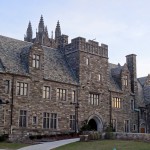
Dubbed the “Philadelphia Plan,” the program requiring federal contractors to practice nondiscrimination in hiring tested the liberal coalition formed in the aftermath of the New Deal in Philadelphia and nationally.
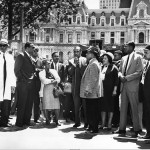
As early as the 1650s, industrious farmers produced enough wheat not only to sustain themselves but also to send a surplus to market. For farmers in the city’s hinterland, the center of any rural community was the “custom” grist mill.
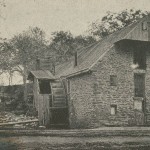
The Barnes Foundation museum displays a world famous collection of impressionist, post-impressionist, and early modern works of art.
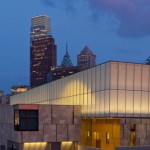
The Free Society of Traders, a joint-stock company founded by a small group of English Quakers in 1681, was organized with the intention of directing and dominating the economic life of colonial Pennsylvania.
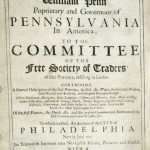
Philadelphia's encounter with Modern Greece dates from the Greek War of Independence in 1821, and thousands of Greek immigrants arrived in the region beginning at the turn of the twentieth century. St. George's Greek Orthodox Cathedral was dedicated in 1921.
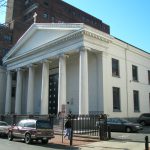
Monument to Six Million Jewish Martyrs
The monument by Nathan Rapoport, dedicated in 1964, was the first public monument in North America to memorialize victims of the Holocaust.
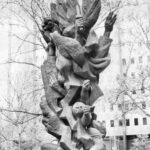
Philadelphia has been a key center in popular music since the late eighteenth century. Philadelphia International Records, known for "the Sound of Philadelphia," was headquartered at 309 S. Broad Street.
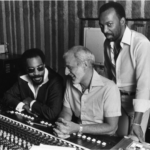
Christ Church was the site for discussions about the foundation of a new American church, separate from the Church of England.
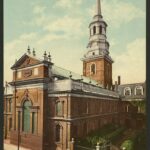
In 1945 and 1946, Philadelphians campaigned aggressively to persuade the United Nations to place its new permanent headquarters in Philadelphia. After first offering to place the UN near Independence Hall, the Philadelphians turned to Fairmount Park for a more pastoral option on Belmont Plateau.
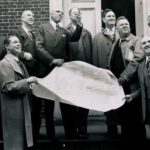
The Delaware River sits at the center of the history and development of Philadelphia and the surrounding communities.
Timeline
Related Reading
Clark, Dennis. The Irish in Philadelphia: Ten Generations of Urban Experience. Philadelphia: Temple University Press, 1973.
Davis, Allen, and Mark H. Haller, eds. The Peoples of Philadelphia: A History of Ethnic Groups and Lower-Class Life, 1790-1840. Philadelphia: Temple University Press, 1973.
Gallman, J. Matthew. Receiving Erin’s Children: Philadelphia, Liverpool, and the Irish Famine Migration, 1845-1855. Chapel Hill: University of North Carolina Press, 2000.
Heinrich, Thomas R. Ships for the Seven Seas: Philadelphia Shipbuilding in the Age of Industrial Capitalism. Baltimore: Johns Hopkins University Press, 1997.
Ignatiev, Noel. How the Irish Became White. New York: Routledge, 1995.
Juliani, Richard N. Building Little Italy: Philadelphia’s Italians Before Mass Migration. University Park, Pa.: Penn State Press, 1998.
Luconi, Stefano. From Paesani to White Ethnics: The Italian Experience in Philadelphia. Albany: State University of New York Press, 2001.
Peltz, Rakhmiel. From Immigrant to Ethnic Culture: American Yiddish in South Philadelphia. Stanford, Calif.: Stanford University Press, 1998.
Takenaka, Ayumi, and Mary Johnson Osirim, eds. Global Philadelphia: Immigrant Communities Old and New. Philadelphia: Temple University Press, 2010.
Whalen, Carmen Teresa. From Puerto Rico to Philadelphia: Puerto Rican Workers and Postwar Economies. Philadelphia: Temple University Press, 2001.
Related Collections
Balch Ethnic Studies Collection, Historical Society of Pennsylvania, 1300 Locust Street, Philadelphia.
National Archives at Philadelphia, 900 Market Street, Philadelphia.
Horner Memorial Library, German Society of Pennsylvania, 611 Spring Garden Avenue, Philadelphia.
J. Welles Henderson Library and Archives, Independence Seaport Museum, Penn’s Landing, Philadelphia.
